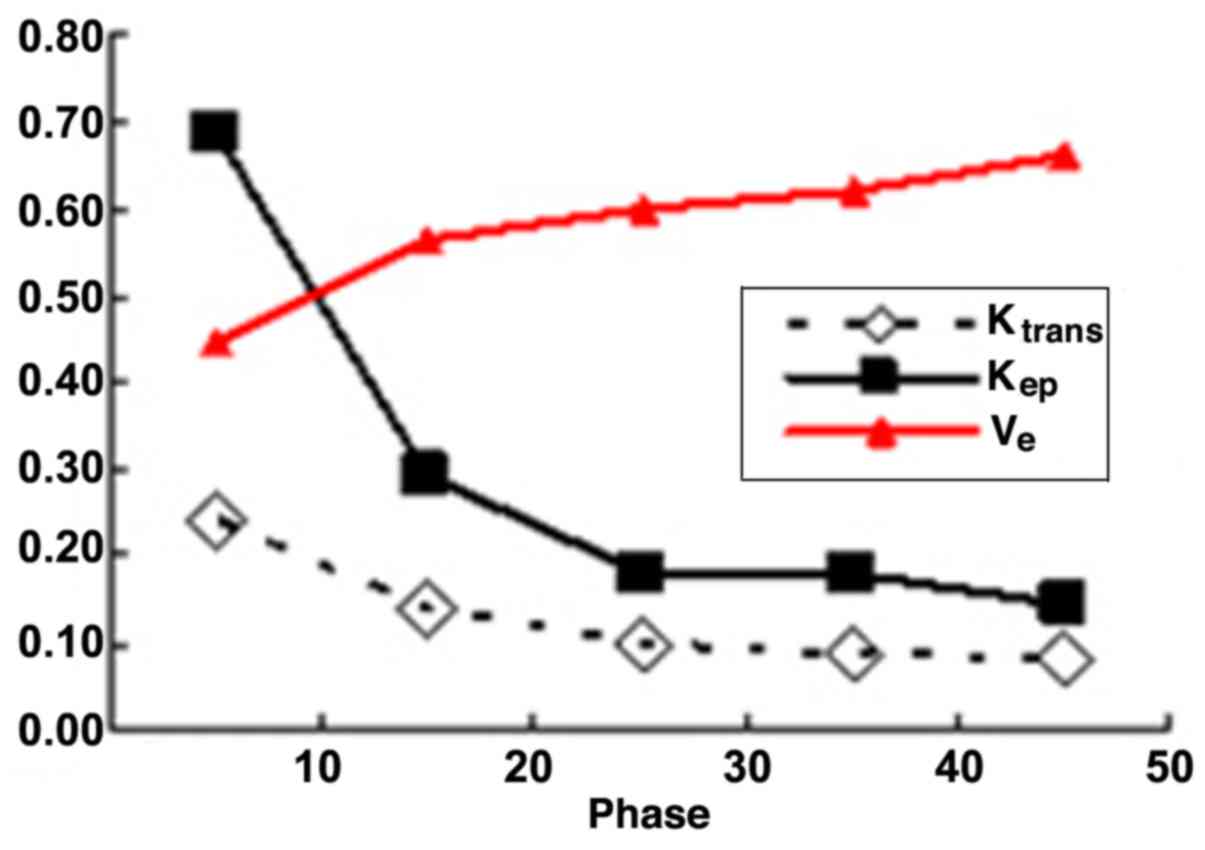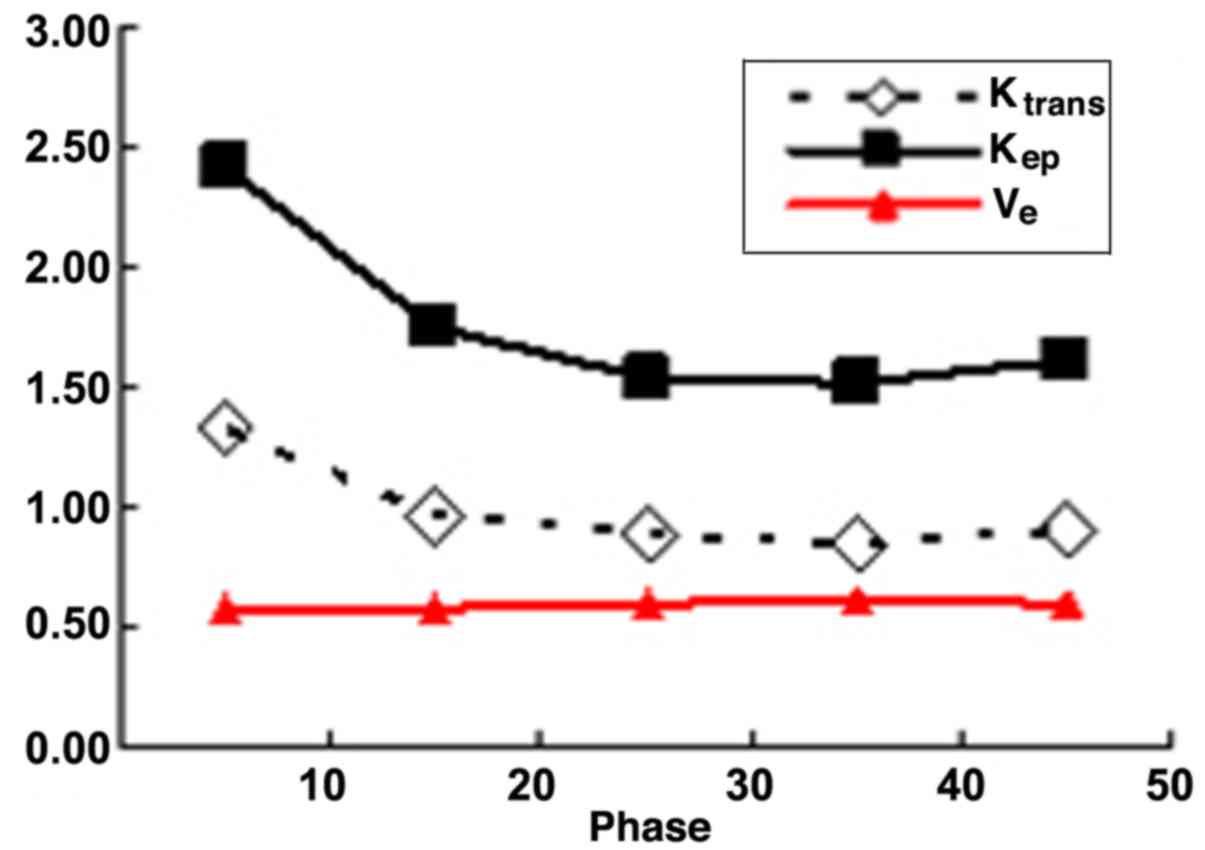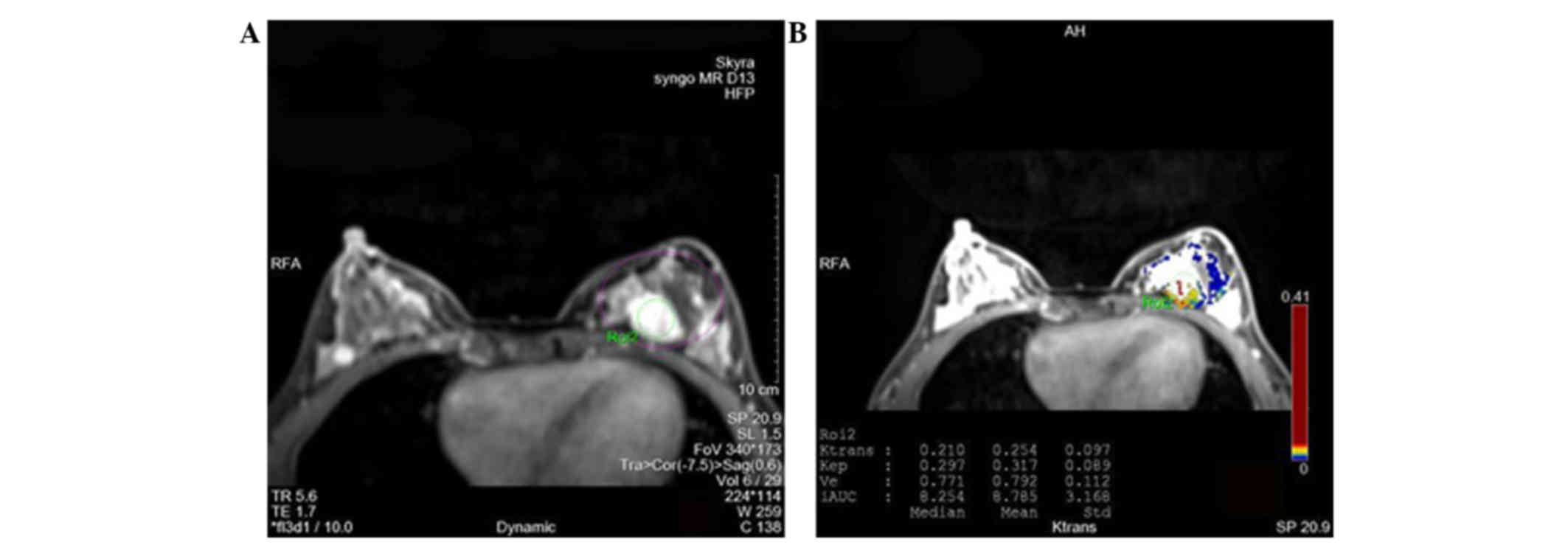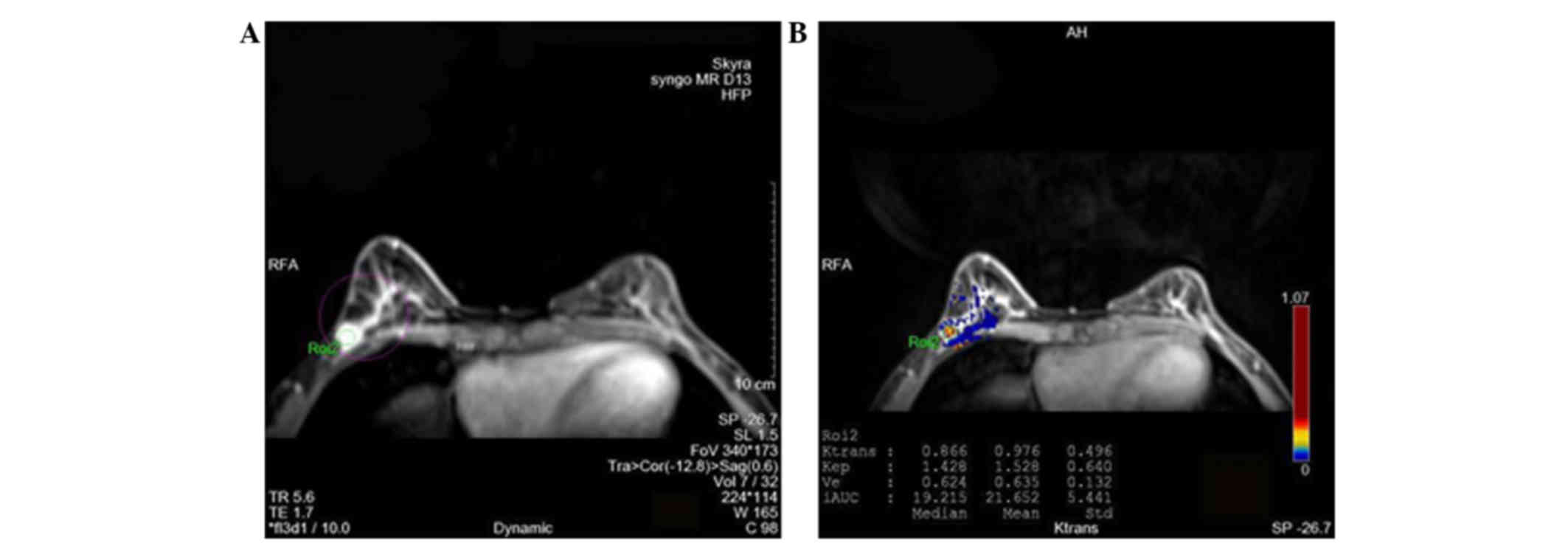Evaluation of optimized magnetic resonance perfusion imaging scanning time window after contrast agent injection for differentiating benign and malignant breast lesions
- Authors:
- Published online on: January 18, 2017 https://doi.org/10.3892/etm.2017.4060
- Pages: 1069-1073
Metrics: Total
Views: 0 (Spandidos Publications: | PMC Statistics: )
Total PDF Downloads: 0 (Spandidos Publications: | PMC Statistics: )
Abstract
The aim of the study was evaluate the 3.0 T magnetic resonance (MR) perfusion imaging scanning time window following contrast injection for differentiating benign and malignant breast lesions and to determine the optimum scanning time window for increased scanner usage efficiency and reduced diagnostic adverse risk factors. A total of 52 women with breast abnormalities were selected for conventional MR imaging and T1 dynamic‑enhanced imaging. Quantitative parameters [volume transfer constant (Ktrans), rate constant (Kep) and extravascular extracellular volume fraction (Ve)] were calculated at phases 10, 20, 30, 40 and 50, which represented time windows at 5, 10, 15, 20 and 25 min, respectively, following injection of contrast agent. The association of the parameters at different phases with benign and malignant tumor diagnosis was analyzed. MR perfusion imaging was verified as an effective modality in the diagnosis of breast malignancies and the best scanning time window was identified: i) Values of Ktrans and Kep at all phases were statistically significant in differentiating benign and malignant tumors (P<0.05), while the value of Ve had statistical significance only at stage 10, but not at any other stages (P>0.05); ii) values of Ve in benign tumors increased with phase number, but achieved no obvious changes at different phases in malignant tumors; iii) the optimum scanning time window of breast perfusion imaging with 3.0 T MR was between phases 10 and 30 (i.e., between 5 and 15 min after contrast agent injection). The variation trend of Ve values at different phases may serve as a diagnostic reference for differentiating benign and malignant breast abnormalities. The most efficient scanning time window was indicated to be 5 min after contrast injection, based on the observation that the Ve value only had statistical significance in diagnosis at stage 10. However, the optimal scanning time window is from 5 to 15 min following the injection of contrast agent, since that the variation trend of Ve is able to serve as a diagnostic reference.













